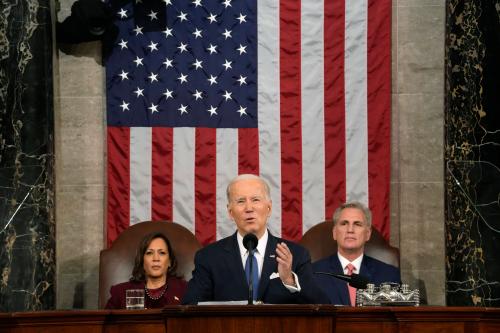Journalists, pundits, and some political scientists argue that gerrymandering distorts representation and gives an unearned advantage to the Republican Party, which controls the majority of governorships and state legislatures. This belief has earned the redistricting process a secure place in the reform agendas of many activists. This may have been the case in the past, but a straightforward analysis shows that it isn’t true now and hasn’t been for several election cycles.
Here’s a simple measure of a fair distribution of House seats in our two-party system: each party ends up with the number of seats that corresponds to its share of the two-party popular vote. In last November’s midterm election, Republican House candidates received 50.6% of the national popular vote, which works out to 51.4% of the two-party vote. A strictly proportional allocation would have given Republicans 224 seats; they ended up with 222.
A fluke? By itself, maybe. But look at the past three cycles:
TABLE ONE: 2018-2022
| Share of the national popular vote (%) | Number of Republican seats | ||||
| Democrats | Republicans | Proportional* | Actual | Difference | |
| 2018 | 53.4 | 44.8 | 198 | 200 | +2 |
| 2020 | 50.8 | 47.7 | 211 | 213 | +2 |
| 2022 | 47.8 | 50.6 | 224 | 222 | -2 |
[*Based on the Republican share of the two-party vote; calculations by the author]
So why do so many well-informed observers believe that House elections structurally favor Republicans? The short answer is that until recently, they did. Here are the results of the four elections in the Tea Party era:
TABLE TWO: 2010-2016
| Share of the national popular vote (%) | Number of Republican seats | ||||
| Democrats | Republicans | Proportional* | Actual | Difference | |
| 2010 | 44.9 | 51.7 | 233 | 242 | +9 |
| 2012 | 48.8 | 47.7 | 215 | 234 | +19 |
| 2014 | 45.5 | 51.2 | 230 | 247 | +17 |
| 2016 | 48.0 | 49.1 | 220 | 241 | +21 |
[*Based on the Republican share of the two-party vote; calculations by the author]
What changed? Two hypotheses fit the facts. First, Republicans caught Democrats flat-footed in the redistricting that followed the 2010 Census. Putting together a powerful plan called REDMAP, Redistricting Majority Project, they used sophisticated new software to gain Republican seats and translated their strong showing in state gubernatorial and legislative elections into district lines that favored their candidates. And second, because Democratic voters were more geographically concentrated in urban areas than Republicans were in the rest of the country, Republicans could more efficiently translate votes into House seats than could Democrats, who won supermajorities in urban areas but lost contested elections elsewhere. This made possible anomalies such as 2012, when Republicans ended up with a healthy majority of 234 seats, even though they lost the national popular vote.
But under the influence of the Tea Party and then Donald Trump, Republicans began running up supermajorities in small towns and rural areas while Democrats made gains in the suburbs, muting the Republicans’ “efficient distribution” advantage. And then, having been burned once, after the 2020 Census, Democrats were better prepared for redistricting than they had been a decade earlier and managed to fight Republicans to a draw when the results from the 50 states were aggregated.[i] Although no one planned it, the system now awards House seats fairly between the parties, not in every state, but nationally.
One sign of this new parity is that neither party enjoys an advantage in the most contested House seats. In 2022, 37 House contests were resolved by less than 5 percentage points. Of these seats, Republicans won 19, and Democrats, 18. In the prior election of 2020, the same number of contests —37 — were settled by less than 5 points, with Democrats winning 19 and Republicans, 18. Not only are the parties evenly balanced on this crucial measure, but redistricting seems to have made little if any difference.
As of now, anyway, neither party enjoys a significant aggregate advantage in either districting or geographical efficiency of voter distribution. Until this changes, the balance between the parties in the House will be decided more by the national popular vote than by any other factor. And because the parties are closely divided as well as deeply divided, relatively small changes in the distribution of the vote can lead to frequent changes of party control in the House.
Three days after this piece was posted, I was informed that Robert Shapiro had performed the same analysis, reached very similar conclusions, and published them in the Washington Monthly in January of this year. I regret that I was not aware of this as I was drafting my article and want to acknowledge fully Mr. Shapiro’s previously published work on the subject.
[i] For evidence on this point, see Did Redistricting Cost Democrats The House? | FiveThirtyEight. For a different argument that yields similar results, see After Redistricting, Here’s How Each Party Could Win the House | Brennan Center for Justice.






Commentary
The gerrymander myth
March 17, 2023